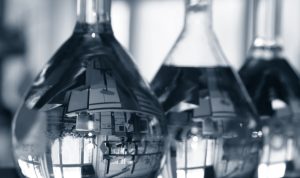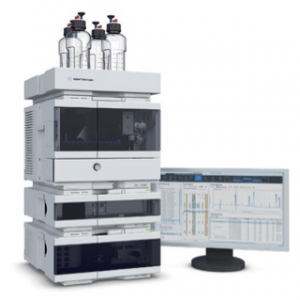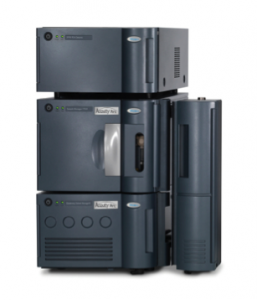
March 21, 2018 -- Here at The Science Advisory Board we are starting a new series on analytical and life science instrumentation. In the past wet chemistry methods were put to use in order to perform chemical analyses. Modern analytical instruments accomplish similar tasks, but with greater sensitivity and specificity. Their increased user-friendliness has made laboratory life far easier for scientists and labs can now speed up procedures and analyze samples to an extent that would have been perhaps unimaginable only a decade or two ago. Each week we will present new content on a multitude of topics ranging from mass spectrometry to life science instrumentation like Sanger Sequencing.
Analytical HPLC

Waters ACQUiTY Arc System
This week will focus on chromatography techniques, beginning more specifically with Analytical HPLC. Chromatography is a versatile method of separating and analyzing the components or solutes within complex chemical mixtures. It is important to understand the two phases present in the technique: Mobile and Stationary. Separation is achieved by allowing a sample within a solvent to be carried by the mobile phase, in a liquid or gas form. The mobile phase will then flow through the stationary phase, typically a column, gel, or paper. It is the stationary phase that separates the mixture based on the varying properties of the mobile mixture.
High-pressure liquid chromatography (HPLC) systems can generally be broken down into three major systems: pumps for delivering solvent systems, columns where the separation is performed, and detectors where chemical components separated on the column are identified as they elute. It is critical that HPLC pumps are capable of handling high pressures, low flow rates, and avoiding the introduction of error through pulsating flow.

Agilent 1260 Infinity II LC System
Once the pump has delivered the mobile phase containing the dissolved sample to the column, the stationary phase gets to work. The column is typically packed with silica beads of a select size in order to separate the mobile phase. The stationary phase can be chemically modified or treated in a number of waters to optimize the separation or increase the affinity of the stationary phase for a particular class of molecules. One option is to pack the column with charged beads, so the opposing charge will attach, while the same charge will elute. In any case, as the mobile phase passes through the stationary, analytes interact different due to their physical and/or chemical interactions with the stationary phase, leading to separation.
There are a wide range of HPLC detectors available from simple spectrophotometric detectors (single or multiwavelength lamps), to fluorescence detectors, and electrochemical detectors. This variety allows an extensive array of analytes to be detected, and also allows for a detector to be selected based on other analytical concerns such as sensitivity, selectivity, and non-destructive detection.
In most laboratories, HPLC requires at minimum a microliter (μL) sample, however depending on column size; analysis of larger samples is possible. Column design and usage depends on the separation formation (i.e. HPLC/UHPLC/or nanoLC) and other separation parameters such as flow rate and solvent systems. Typical HPLC pumps offer a max pressure capability of 400-600 bar. UHPLC systems offer much higher max pressure capabilities, usually between 1,000-1,200 bar, but some capable of 1,300 bar. A high-pressure pump is necessary for use with the small particle sizes (2-3 μm) and high packing densities found in UHPLC columns.
HPLC lends itself to a variety of analytical HPLC systems. In low-end HPLC, systems are not equipped to handle gradient elution and are not as fully featured as general-purpose HPLC systems. On the other end of the spectrum in LC technology, micro/nano/capillary LC systems use comparable pumps to traditional HPLCs, but run at low flow rates and are generally used as front ends to interface with mass spectrometers.
Keep an eye out as we continue to uncover more chromatography techniques including Preparative HPLC, Gas Chromatography, and more!
What do you think?
If this chromatography series relates to your research or if there is a topic you’d like to see us uncover, reach out below and start the discussion in Disqus!
Copyright © 2018 scienceboard.net


